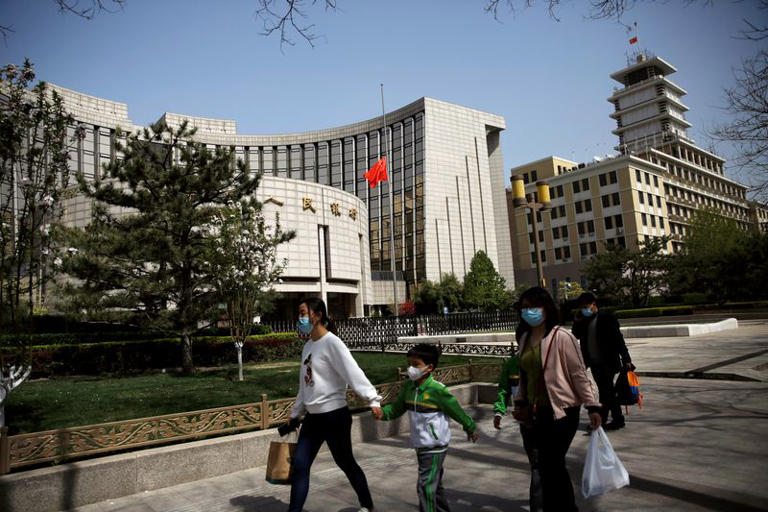China’s surprise move to cut bank funding costs on Thursday has significantly impacted global financial markets. The People’s Bank of China (PBOC) announced a 20 basis point reduction in the one-year medium-term lending facility (MLF), a decision that led to a notable drop in stock prices and a rally in bond markets.
Market analysts have offered a range of interpretations regarding the implications of this unexpected cut. Lemon Zhang, an FX and emerging markets macro strategist at Barclays in Singapore, saw the magnitude of the rate cut as a potential precursor to further reductions in benchmark interest rates. Zhang pointed out that the scale of the cut, being larger than the typical 10 basis points, suggests that additional rate cuts could be on the horizon. Despite this, he tempered his enthusiasm by noting that the overall growth momentum in China remains weak. Zhang remarked, “I would think it helps on the margin. But after all, you still have a very subdued growth momentum,” indicating that while the cut might offer some relief, it does not fully address the broader challenges facing the Chinese economy.
Marco Sun, Chief Financial Market Analyst at MUFG Bank (China) in Shanghai, expressed concern over the rising risk of another slowdown in China’s economic growth. Sun highlighted that China’s GDP growth had slowed in the second quarter, and he suggested that the MLF cut was aimed at mitigating these negative effects. By reducing the cost of financing and releasing additional liquidity, the PBOC’s move is intended to support economic recovery. Sun also pointed out that a significant amount of MLF loans are approaching maturity, which could have been another factor influencing the PBOC’s decision to lower the rate.
Gary Ng, Asia-Pacific Senior Economist at Natixis in Hong Kong, interpreted the PBOC’s actions as an effort to provide more support to banks by lowering their medium-term funding costs. Ng observed that this reduction could help protect banks’ net interest margins. However, he also noted that the yuan might face ongoing pressure if investors continue to expect lower interest rates in China. Ng suggested that if investor confidence improves, the yuan might stabilize as capital inflows potentially increase.
Frances Cheung, Head of FX and Rates Strategy at OCBC Bank in Singapore, analyzed the timing and magnitude of the MLF cut. She noted that the PBOC’s decision to cut the MLF rate without any imminent maturities indicates an intent to signal an easing of monetary policy. Cheung highlighted that the size of the cut was more significant compared to the reduction in the 7-day reverse repo rate, reflecting the elevated level of the MLF rate relative to other funding sources.
Khoon Goh, Head of Asia Research at ANZ in Singapore, expressed skepticism about the effectiveness of the rate cut given the broader economic challenges China faces. Goh argued that while the rate cut might provide some short-term relief, it is unlikely to address the fundamental issues affecting the Chinese economy. He emphasized that problems in the property sector and a lack of consumer confidence require more substantial fiscal support or other policy measures. “In terms of the challenges facing the Chinese economy, rate cuts by themselves, particularly of this magnitude, are not really going to be that material,” Goh said.
Overall, while the PBOC’s unexpected rate cut has introduced some short-term volatility in financial markets, analysts are divided on its long-term impact. The decision underscores the ongoing efforts by Chinese authorities to stimulate the economy amid persistent growth concerns. However, the effectiveness of the rate cut in addressing structural issues and restoring economic confidence remains a topic of debate.
